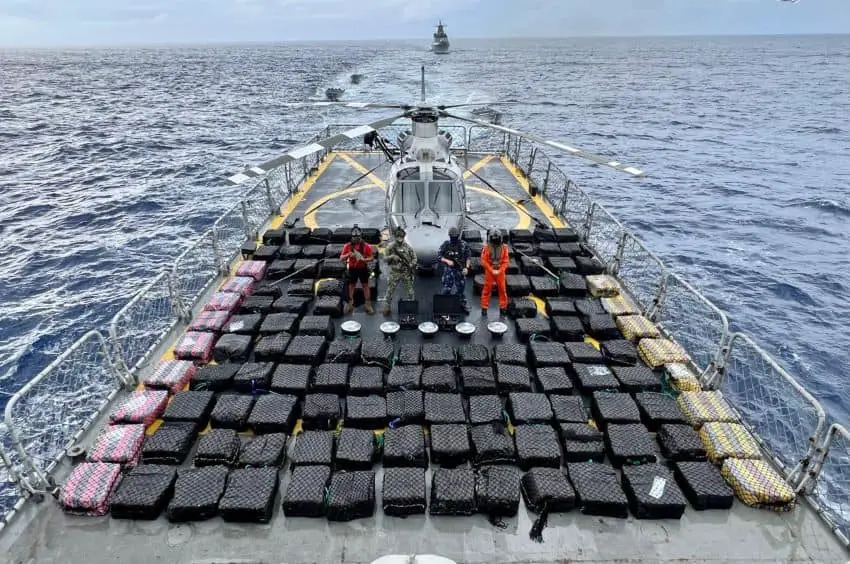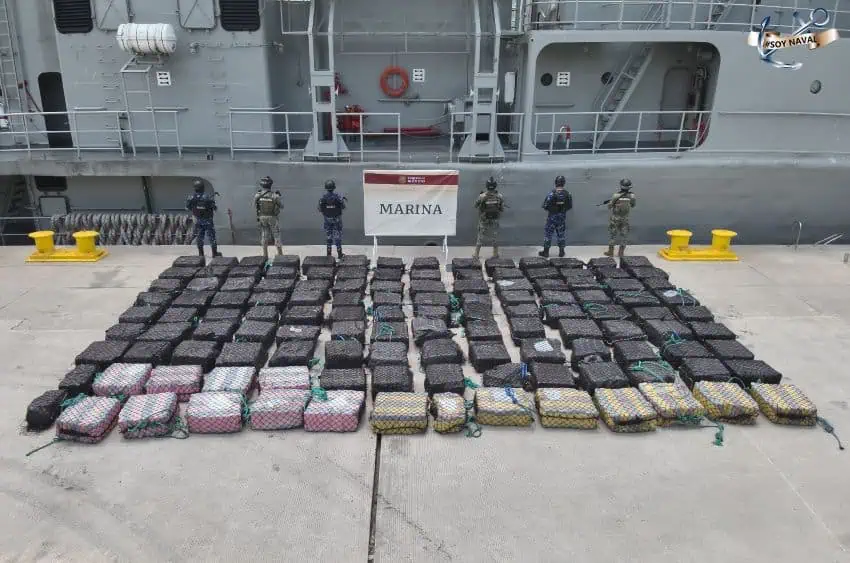The Mexican Navy has conducted its largest drug seizure operation of the current administration, intercepting over 7 tonnes of suspected cocaine in two separate incidents off the Pacific coast.
The operations, which included a high-speed chase and resulted in 15 arrests, underscore Mexico’s ongoing efforts to combat drug trafficking in its territorial waters.

In a statement released last Friday, the Naval Ministry (SEMAR) detailed the primary operation, which occurred southwest of Manzanillo, Colima. Navy personnel, supported by a Panther helicopter, intercepted three speedboats carrying 126 packages containing 5.6 tonnes of “presumed” cocaine.
The ministry emphasized that this seizure “represents the biggest confiscation in a single event during the president’s administration,” referring to the 2018-24 government period.
A dramatic video released by the navy shows go-fast boats speeding across the water before the suspected smugglers were apprehended, with a navy helicopter tracking the vessels from above.
The operation also resulted in the seizure of 1,100 liters of fuel and the arrest of 15 “alleged lawbreakers.” The suspects and the illicit cargo were subsequently turned over to the Federal Attorney General’s Office for processing.
In a separate incident outlined in the same statement, navy personnel seized an additional 32 packages of suspected cocaine, weighing approximately 1.6 tonnes, found adrift in the Pacific Ocean southwest of Lázaro Cárdenas, Michoacán. A “small vessel” with three outboard motors was also confiscated, though no arrests were reported in this second operation.

While SEMAR did not specify the exact dates of these operations, they stated that the seizures occurred in recent days. The ministry also refrained from identifying the detainees or disclosing their nationalities.
These recent seizures are part of a pattern of successful maritime interdictions by the Mexican Navy. Earlier this year, the navy confiscated 1.5 tonnes of cocaine off the Pacific coast of Guerrero in July, 3 tonnes off the Caribbean coast of Quintana Roo in May, and almost 2 tonnes off the Pacific coast in April.
The scale and frequency of these operations highlight the ongoing challenges Mexico faces in combating drug trafficking. According to the United Nations Office on Drugs and Crime, “cocaine is typically transported from Colombia to Mexico or Central America by sea and then onwards by land to the United States and Canada.”
A 2021 report by the Organization of American States identified seven maritime drug trafficking routes between South America and Mexico or Central America, with five of these routes terminating in Mexico, including in the states of Chiapas, Guerrero, and Sinaloa.



